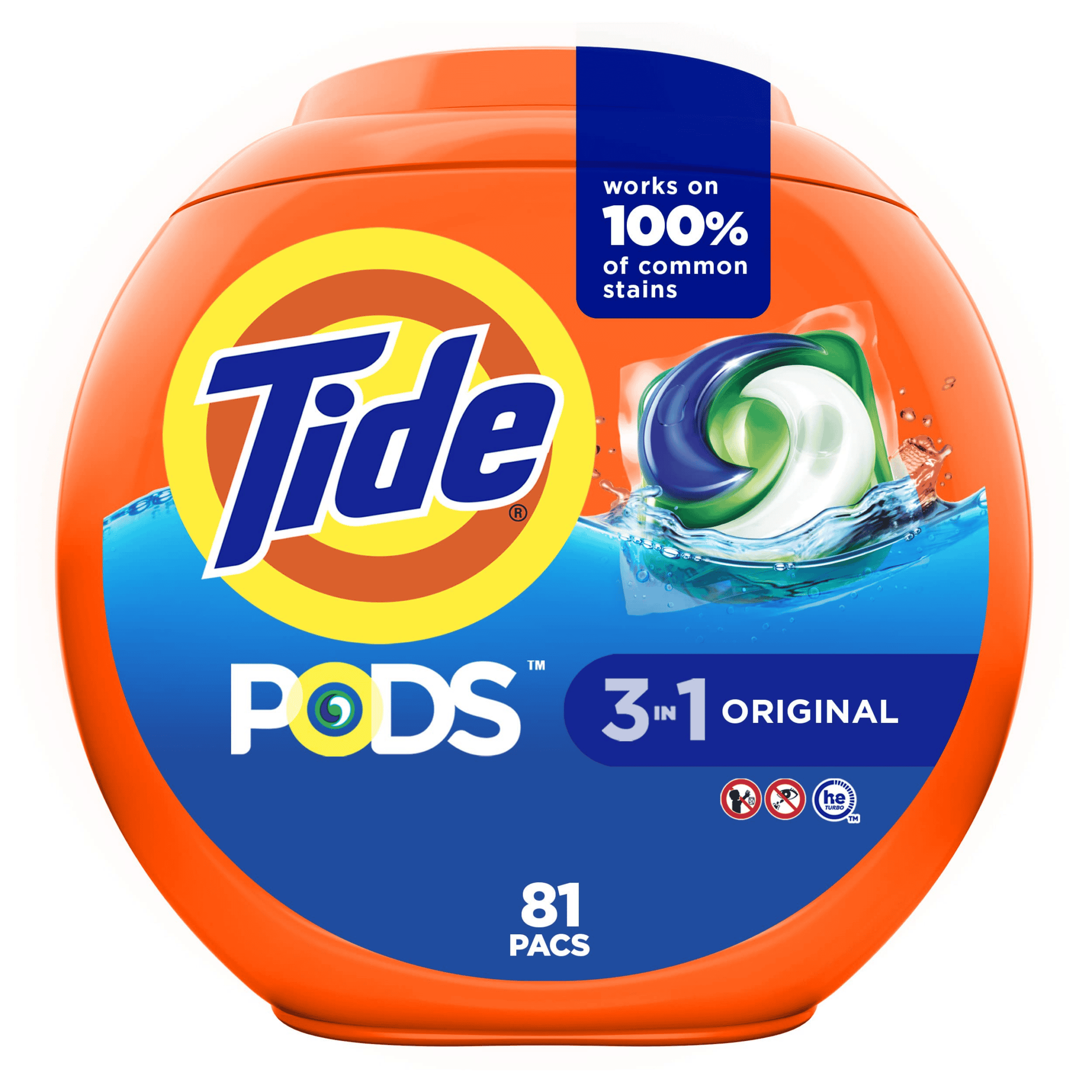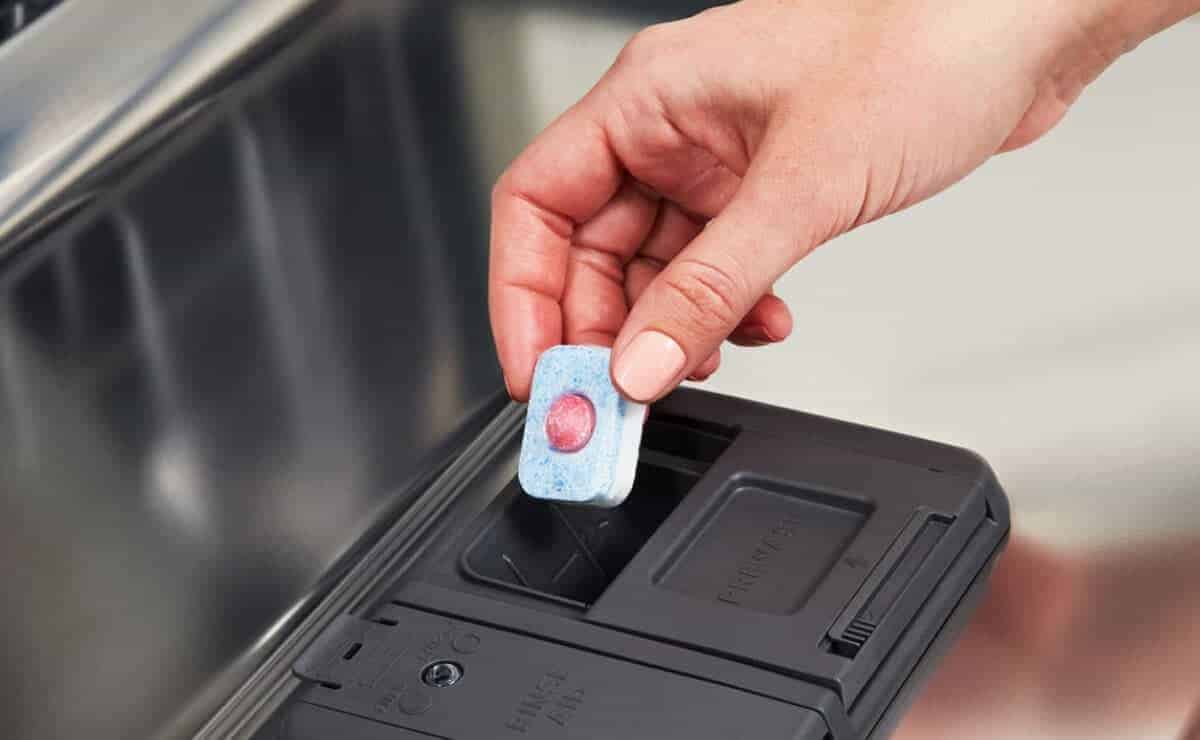When a dishwasher pod doesn’t dissolve, it can be a real headache. It means dishes come out dirty, and you’re left wondering what went wrong. This common problem has simple fixes that many people overlook. Whether it’s a pod stuck in the dispenser or a cycle that doesn’t complete, understanding the root cause is key to solving the issue. Tackling dishwasher pod dissolution problems doesn’t have to be a hassle. By ensuring the dispenser is clear, setting the right water temperature, and placing the pod correctly, most issues can be swiftly resolved.
The importance of regular maintenance, such as cleaning and descaling, cannot be overstated. It’s not just about preventing clogs; it’s about optimizing your dishwasher’s performance for sparkling clean dishes every time. Remember, a little attention goes a long way in keeping your dishwasher running smoothly and your dishes spotless. This article explores why dishwasher pods sometimes fail to dissolve and how to address the problem effectively. From checking water temperature to ensuring the dispenser isn’t blocked, we’ll cover all the bases. With the right approach, you can get your dishwasher back to its peak performance, leaving dishes sparkling clean.

Troubleshooting the “Undissolved Pod” Issue in Your Dishwasher
The problem of dishwasher detergent pods not dissolving completely during a wash cycle is surprisingly common. A partially or fully undissolved pod leads to dishes that aren’t as clean as they should be. This can be frustrating, but thankfully, the causes are usually straightforward and can be addressed easily.
The Culprits Behind the Problem
Several factors can contribute to this issue. Here’s a breakdown of some of the most common ones:
Water Temperature
Dishwasher detergent pods are designed to dissolve in hot water. If the water in your dishwasher isn’t reaching a high enough temperature, the pod might not dissolve fully.
Pod Placement
The placement of the detergent pod in the dishwasher also plays a role. If the pod is blocked by dishes or isn’t in the designated detergent dispenser, it might not get enough water exposure to dissolve completely.
Overloading the Dishwasher
Overloading the dishwasher can restrict water flow and prevent the detergent pod from getting adequately wet, hindering its dissolution.
Dishwasher Spray Arm Issues
If the spray arms in your dishwasher are clogged or not rotating properly, they might not be able to spray enough water onto the detergent pod to dissolve it.
Pod Quality
In some cases, the quality of the detergent pod itself can be the issue. Low-quality pods might not dissolve as easily as higher-quality ones.

Solutions to Get Your Pods Dissolving
Here’s a table outlining some potential solutions to the “undissolved pod” issue:
| Problem | Solution |
|---|---|
| Low water temperature | Make sure your dishwasher’s water heater is set to at least 120°F (49°C). |
| Incorrect pod placement | Place the pod in the designated detergent dispenser. Make sure it’s not blocked by dishes. |
| Overloaded dishwasher | Avoid overloading the dishwasher. Ensure dishes are arranged to allow for proper water flow. |
| Clogged or malfunctioning spray arms | Clean the spray arms regularly. If they’re not rotating properly, they might need to be repaired or replaced. |
| Low-quality pods | Try using a different brand of detergent pods. Consider using pods specifically designed for hard water if you have hard water in your area. |
Additional Tips
- Use fresh pods: Old or expired pods might not dissolve as easily.
- Don’t overfill the detergent dispenser: If the dispenser is overfilled, the pod might not get enough water exposure to dissolve.
- Run a hot water cycle: If you suspect your dishwasher’s water isn’t getting hot enough, run a hot water cycle before starting your dishwasher.
- Consult your dishwasher’s manual: Refer to your dishwasher’s manual for specific troubleshooting tips and recommendations.
By addressing these potential causes, you can ensure your dishwasher detergent pods dissolve completely, leaving your dishes sparkling clean. Remember, a clean dishwasher leads to cleaner dishes!
Top Dishwasher Detergent Pods: Ranked
| Rank | Product | Notes |
|---|---|---|
| 1 | Cascade Platinum Plus ActionPacs | Best Overall, powerful cleaning, eliminates pre-rinsing |
| 2 | Finish Powerball Deep Clean | Best value, effective on tough stains |
| 3 | Member’s Mark Ultimate Clean Dishwasher Pacs | Budget-friendly, tackles dried-on food |
| 4 | AspenClean Unscented Dishwasher Pods | Eco-friendly, unscented, effective cleaning |
| 5 | Dropps Dishwasher Detergent Pods | Natural formula, lemon scent, fights residue |
Key Takeaways
- Ensure the water temperature in your dishwasher is set to at least 120°F to adequately dissolve dishwasher pods and achieve sparkling clean dishes.
- Regularly inspect and clean your dishwasher’s soap dispenser to prevent blockages from detergent remnants or mineral buildup, which can inhibit pod release and dissolving.
- Avoid interrupting the dishwasher cycle to ensure pods have enough time to dissolve completely; interruption can result from accidental door openings or power outages.
- Be mindful of dishwasher loading practices; overloading can restrict water flow and prevent the pod from dissolving by not allowing water jets to reach all items.
- Consider running the kitchen sink’s hot water before starting the dishwasher to guarantee that hot water is immediately available, aiding in quicker and more complete pod dissolution.
- Regularly perform maintenance routines such as cleaning and descaling the dishwasher to prevent hard water buildup and ensure optimal water flow for effective cleaning.
Common Reasons for Dishwasher Pod Not Dissolving
When a dishwasher pod doesn’t dissolve, it often leaves one wondering why. Several factors can lead to this frustrating issue, some more obvious than others. Identifying the root cause is the first step toward a solution.
Water Temperature: One of the leading causes is the water temperature. For a dishwasher pod to dissolve properly, the water must be hot enough. Many manufacturers recommend a minimum temperature of 120°F. If the water doesn’t reach this temperature, the pod may not dissolve entirely, resulting in a less effective wash.
Dispenser Issues: Sometimes, the problem lies with the dishwasher’s soap dispenser. If the dispenser is blocked or broken, the pod can’t release into the dishwasher correctly. Common blockages include remnants of detergent from previous cycles or a buildup of minerals from hard water. Checking and cleaning the dispenser regularly can help avoid this issue.
Cycle Interruption: Dishwashers go through various cycles to clean dishes thoroughly. If a cycle is interrupted, the pod might not get enough time to dissolve. This can happen for several reasons, from accidental door openings to power outages. Ensuring that the dishwasher completes its cycle without interruption is crucial for the pod to dissolve as intended.
| Cause | Solution |
|---|---|
| Water Temperature | Ensure water heater is set to 120°F |
| Dispenser Issues | Clean and check dispenser for blockages |
| Cycle Interruption | Avoid opening door during cycles |
Water flow and load size also play crucial roles. Insufficient water flow can prevent the pod from dissolving correctly, while overloading the dishwasher can restrict water from reaching the pod. It’s important to ensure that the dishwasher isn’t packed too tightly and that the water jets can reach all items. Regular maintenance and understanding these common issues can significantly improve dishwasher performance.
Checking Water Temperature
Water temperature plays a crucial role in the effectiveness of dishwasher pods. For these pods to dissolve fully, they require water to reach a certain warmth. Most dishwashers are designed to operate with hot water, usually set between 120°F and 160°F. If the water does not hit these temperatures, the pod might not break down correctly, leaving dishes unclean.
To troubleshoot this, they should first check the dishwasher’s manual. It often states the optimal temperature range. If the device lacks a built-in heater, the household water heater settings might need adjustment. Increasing the water temperature can significantly improve pod dissolution but should be done cautiously to avoid scalding hazards.
Another step involves running the hot water in the sink before starting the dishwasher. This method ensures that hot water is immediately available to the appliance, promoting faster and more complete pod breakdown. They might also measure the water temperature using a digital thermometer during the dishwasher cycle to ensure it reaches the necessary warmth.
Seasonal changes can affect water temperature too. During colder months, water comes into the house at a lower temperature, which might not be sufficient for pod dissolution. Being mindful of these changes and adjusting the water heater or dishwasher settings accordingly can help maintain optimal performance.
Regularly checking and adjusting water temperature is a simple yet effective way to tackle dishwasher pod issues. It ensures that the dishwasher runs efficiently, and dishes come out clean and free from pod residue.
Inspecting the Dispenser for Blockages
One common issue that can lead to dishwasher pods not dissolving is a blocked dispenser. It’s crucial to regularly check the dispenser for any signs of blockage. Bits of food, soap scum, or buildup from previous washes can hinder the dispenser door from opening during the cycle. This prevents the pod from releasing into the water.
To tackle this, first, open the dishwasher and locate the dispenser. It typically has a small door on the inside of the machine. Check for any visible signs of debris or buildup. If you spot anything, gently clean the area with a damp cloth. For tougher buildup, a small brush or toothpick can help clear the blockage. Afterwards, run the dishwasher on a short cycle without any dishes to ensure the dispenser is clean and functions properly.
Furthermore, it’s important to note that the type of detergent used can affect the likelihood of blockages. Some powders or gels may leave more residue than others. Considering a switch to a different brand or type of detergent can, in some cases, reduce future dispenser issues.
Additionally, water quality plays a role in the effectiveness of the dishwasher’s cleaning cycle. Hard water can lead to more frequent blockages due to mineral deposits. Installing a water softener or using rinse aids designed for hard water can help mitigate this issue.
Routine inspections and cleaning of the dispenser are vital. They ensure the dishwasher runs efficiently and the pods dissolve as intended. This simple step can significantly impact the machine’s performance and the cleanliness of your dishes.
Troubleshooting Incomplete Wash Cycles
When facing issues with dishwasher pods not dissolving, it’s crucial to look into incomplete wash cycles. A cycle that doesn’t complete often leads to detergents staying intact. Several factors might disrupt a dishwasher’s cycle. Understanding and addressing these can be key to solving the problem.
Firstly, check for power issues. Sudden power cuts or fluctuations can stop a cycle midway. Ensure the dishwasher’s plug is secure and the power source reliable. For those with smart home systems, verify that the dishwasher isn’t accidentally controlled or turned off remotely.
Secondly, water temperature plays a vital role. Dishwashers require hot water to dissolve pods effectively. If the water isn’t reaching the necessary temperature, pods may remain whole. Most dishwashers need water at around 120°F to operate best. Homeowners can use a thermometer to check their water heater output and adjust if needed.
Additionally, inspect for a loaded dishwasher. Overloading can block water jets and prevent them from reaching all areas, including the dispenser. This blockage can halt the cycle or reduce its efficiency, leaving the pod undissolved. Ensuring proper loading and leaving space between items for water flow can significantly impact cycle completion.
Lastly, software glitches are not uncommon. Just like any technology, dishwashers benefit from occasional resets. If the dishwasher is experiencing frequent incomplete cycles, try resetting the system. This can often resolve minor software issues that could disrupt normal functioning.
Addressing these areas not only helps in resolving pod dissolution problems but also enhances the overall efficiency and longevity of the dishwasher. Regular maintenance and checks ensure that the machine performs its best, keeping dishes clean and spotless.
Tips for Ensuring Proper Dissolving of Dishwasher Pods
When facing the common issue of dishwasher pods not dissolving, several straightforward steps can make a big difference. It’s not just about tossing a pod in and hoping for the best. Certain practices can increase the likelihood of a complete dissolve, leading to cleaner dishes without residue.
First off, check the dispenser. If it’s clogged or broken, pods won’t dissolve properly. It’s a simple fix but often overlooked. Make sure the dispenser door opens during the cycle. If it doesn’t, manually cleaning or repairing it might be necessary.
Water plays a huge role in the dissolving process. Hot water is key. Dishwashers typically require water to be at least 120°F to effectively melt the pod. If the water isn’t hot enough when the cycle starts, the pod may partially or not dissolve at all. Running the kitchen sink’s hot water before starting the dishwasher can ensure the first fill is hot enough.
Placement matters. Where you put the pod in the dishwasher can affect its dissolving. Always place the pod in the designated dispenser. Avoid placing the pod at the bottom of the dishwasher. This common mistake leads to pods not dissolving correctly because they don’t get exposed to enough water or detergent cycles.
Regular maintenance also plays a part. Hard water buildup or debris can block water flow, leading to insufficient cleaning action. Regularly cleaning and descaling the dishwasher ensures water flows freely and reaches all parts of the dispenser and dishwasher.
By following these tips, dishwasher pod dissolution issues can be minimized. These actions help maintain the efficiency of the dishwasher and guarantee that dishes come out sparkling clean. Regular checks and maintenance reinforce these efforts, ensuring the dishwasher operates at peak performance.
Frequently Asked Questions
What should I check first if my dishwasher pods aren’t dissolving properly?
Ensure the dispenser is not clogged or malfunctioning. A clean, fully functional dispenser is crucial for the pod to dissolve properly.
How can I ensure the dishwasher pod melts effectively?
Make sure the dishwasher is using hot water. Hot water is essential for the effective melting of dishwasher pods.
Where should I place the dishwasher pod for the best results?
Always place the pod in the designated dispenser correctly. This ensures it gets exposed to water and dissolves as intended.
Why is regular maintenance important for my dishwasher?
Regular cleaning and descaling prevent water flow blockages, ensuring the dishwasher works efficiently and the pods dissolve properly.
How often should I check and maintain my dishwasher to prevent pod dissolution issues?
Regular checks and maintenance are recommended to optimize dishwasher performance and cleanliness. This helps minimize pod dissolution issues and ensures clean dishes.







